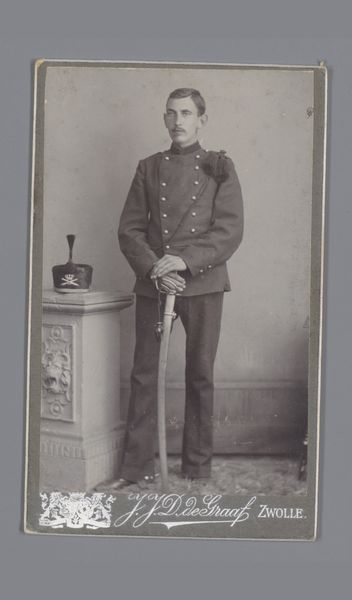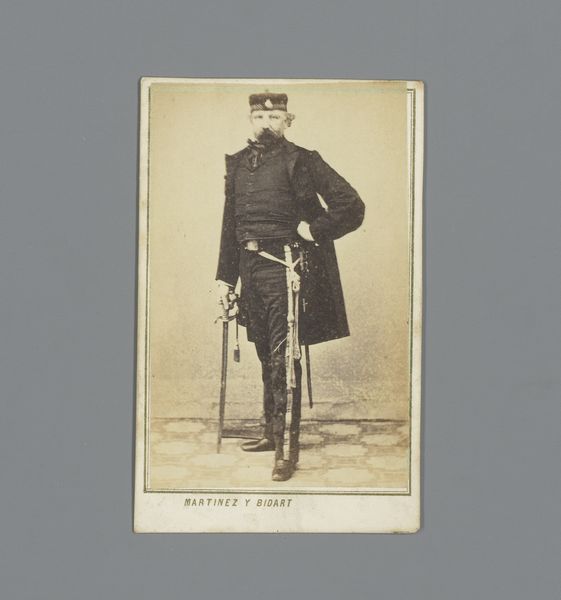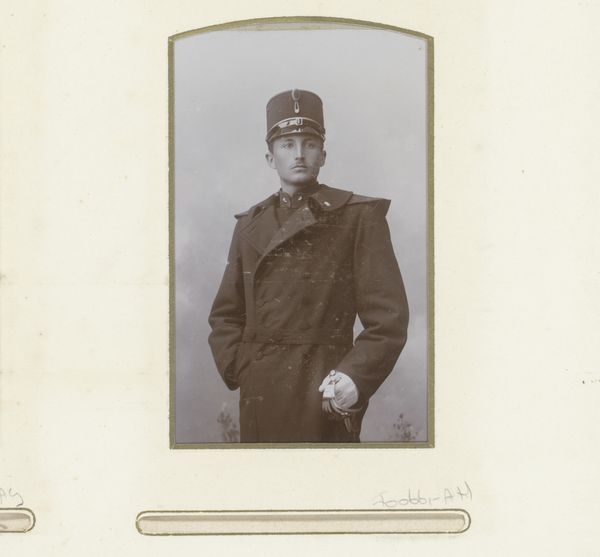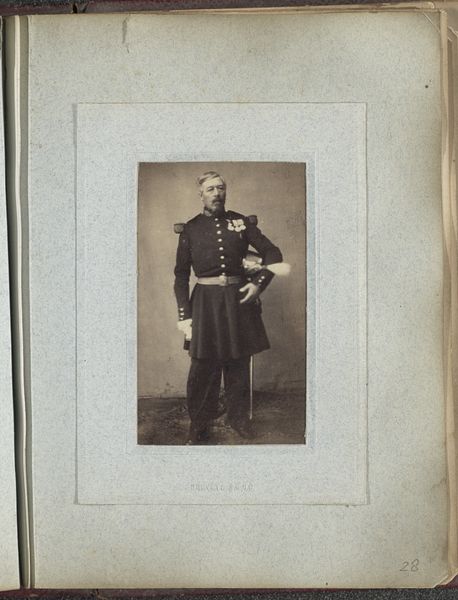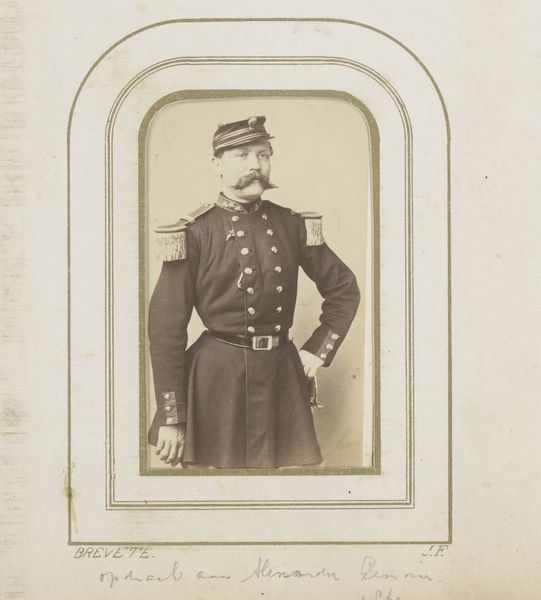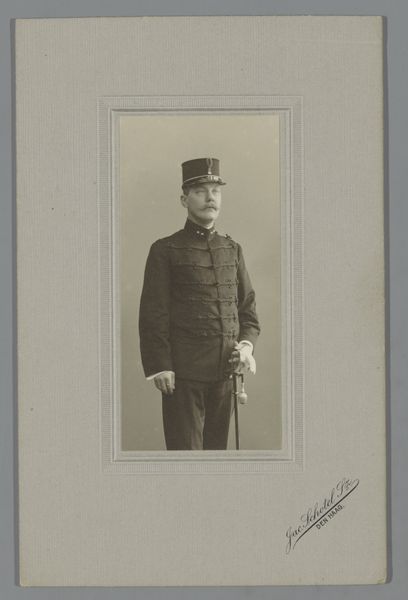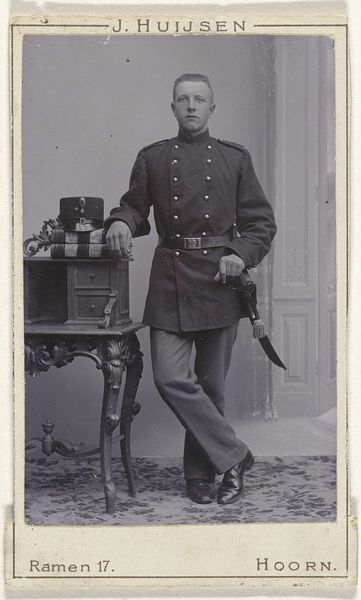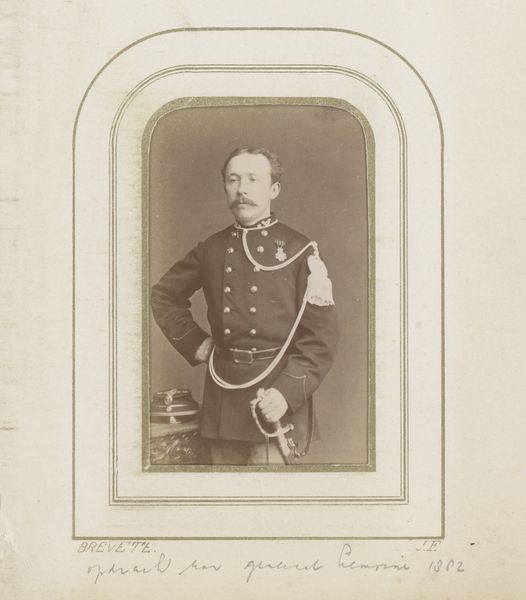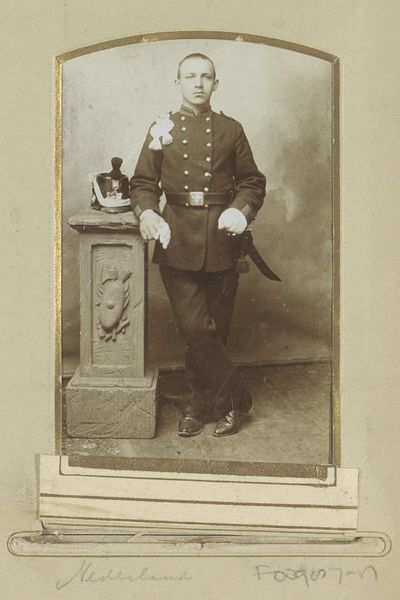
Dimensions: height 83 mm, width 51 mm
Copyright: Rijks Museum: Open Domain
Editor: Here we have “Portrait of a Man in Military Uniform,” a gelatin silver print, dating from around 1880 to 1920. There's a real sense of formality to it, but also something a little...staged, I guess? It makes me wonder what the story is behind this stern-looking man and why this image was created. What do you see when you look at it? Curator: Well, immediately, the framing within a larger album page is quite telling. These portraits were often part of larger familial collections, speaking to ideas of legacy and social status. Notice how the subject is posed with a visible sword – a clear symbol of power and authority within the military. Think about the social pressures on men of this era – to perform their masculinity through service and visible markers of success. What kind of institution is producing images of these kinds of men? Editor: So, you are suggesting this photograph is a symbol of societal values in the late 19th and early 20th centuries? I suppose I had not considered the institutional framing and pressures of that time. Curator: Exactly. Also, consider the function of photography at the time. It offered a more accessible means for the middle class to emulate the portraiture traditions of the elite, further reinforcing these societal values. What message does it send by placing himself in this structured pose in contrast with those elites? Editor: That's interesting. So, the act of having the photograph taken, and then including it in the family album, was as important as the image itself in communicating status and identity. I learned a lot about institutional power. Thanks! Curator: My pleasure. The photograph isn't just an image, but also evidence of an ideology. Thinking critically about how photographs are produced and circulated provides insight into those values.
Comments
No comments
Be the first to comment and join the conversation on the ultimate creative platform.

